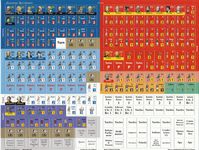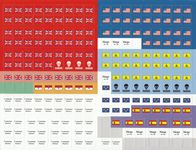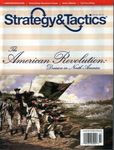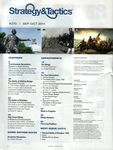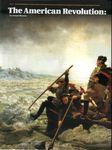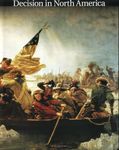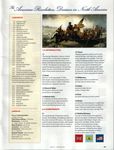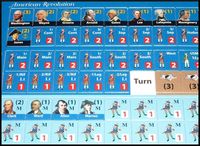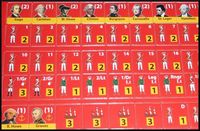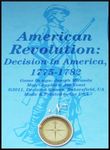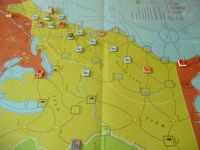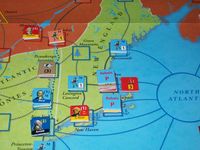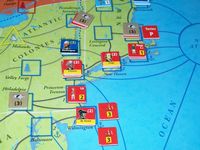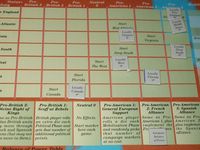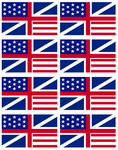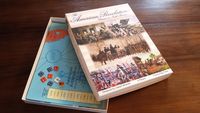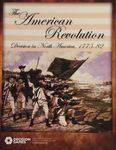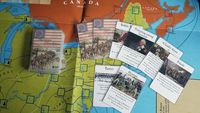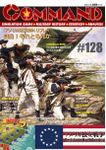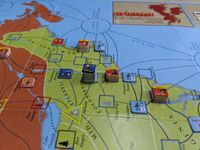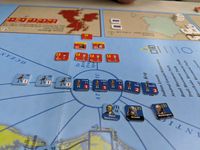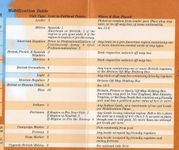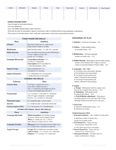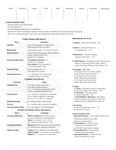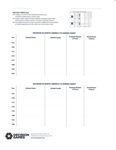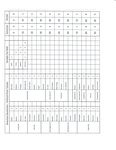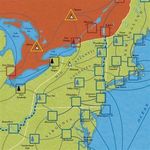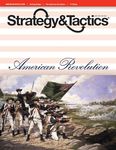

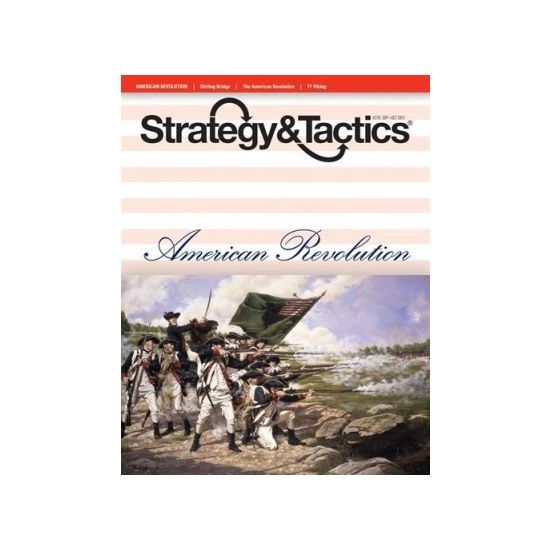
|
|
|
|
2
300'
Some necessary text
|
The American Revolution: Decision in North America
The American Revolution: Decision in North America (AR), is a two-player wargame, designed by Joseph Miranda, in which you command the Americans or the British in the War of American Independence, 1775-82. The American player may also control French and Spanish units if those nations enter the war. Instead of the full campaign game, players may also choose to play the shorter scenario that ends in 1779. Each inch on the area map, which covers all of North America from the Mississippi River east, including the Caribbean, equals 100 miles. Each brigade-sized unit represents two to four battalions (about 1,500 to 4,000 men). Each game turn represents one year. All the game’s charts and tables are printed on the mapsheet. The rules contain a total of 13,000 words, which works out to allow two experienced players to finish a game in four to five hours. The system can be fudged for solitaire play. Rules cover such things as: initiative, rabble rousing, revolutionary political progress, colonial loyalties, the European balance of power, mobilizing new units, forced march, supply and forage, enlistment expirations, leaders, fog of war, fleets, French and Spanish alliances, Hessians, Indian sovereignty, fortresses and sieges, partisans, militia, overrun, massacre, political vs. military victory, frontier warfare, honors of war, grenadiers, light troops, detachments, regulars, and much more. The turn sequence is as follows. Reprinted in Command Magazine Japan #128 in 2016 April.
| Mechanics: | Area Control/Area Influence Dice Rolling Point to Point Movement Simulation |
| Categories: | War War |
| Alternative names: | The American Revolution: Decision in North America アメリカ独立戦争 |
| This was seen 721 times | |
The American Revolution: Decision in North America (AR), is a two-player wargame, designed by Joseph Miranda, in which you command the Americans or the British in the War of American Independence, 1775-82. The American player may also control French and Spanish units if those nations enter the war. Instead of the full campaign game, players may also choose to play the shorter scenario that ends in 1779. Each inch on the area map, which covers all of North America from the Mississippi River east, including the Caribbean, equals 100 miles. Each brigade-sized unit represents two to four battalions (about 1,500 to 4,000 men). Each game turn represents one year. All the game’s charts and tables are printed on the mapsheet. The rules contain a total of 13,000 words, which works out to allow two experienced players to finish a game in four to five hours. The system can be fudged for solitaire play. Rules cover such things as: initiative, rabble rousing, revolutionary political progress, colonial loyalties, the European balance of power, mobilizing new units, forced march, supply and forage, enlistment expirations, leaders, fog of war, fleets, French and Spanish alliances, Hessians, Indian sovereignty, fortresses and sieges, partisans, militia, overrun, massacre, political vs. military victory, frontier warfare, honors of war, grenadiers, light troops, detachments, regulars, and much more. The turn sequence is as follows. Reprinted in Command Magazine Japan #128 in 2016 April.
| Mechanics: | Area Control/Area Influence Dice Rolling Point to Point Movement Simulation |
| Categories: | War War |
| Alternative names: | The American Revolution: Decision in North America アメリカ独立戦争 |
| This was seen 721 times | |


